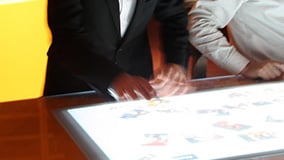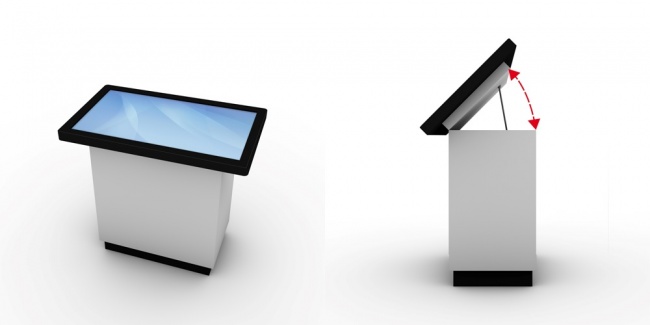

Bei der Entwicklung von 3DUIs gibt es weiterhin viele Herausforderungen, wie z. Vor allem wegen der inzwischen uberlegenen, erschwinglichen Hardware ist VR nun auf dem Weg, ein alltaglicher Anblick zu werden. There they were redirected at an optimal rate.Īdditionally, this thesis presents the hardware developed throughout this thesis, a stereoscopic multi-touch table, and a low-resolution peripheral vision stimulation to enhance presence and increase the field-of-view (FOV) of head-mounted displays (HMDs).ĭas erneute Interesse an Virtual Reality (VR) in den letzten Jahren fuhrte zur Entwicklung von 3D User Interfaces (3DUIs) zur Interaktion mit dreidimensionalen Inhalten. Users had to leave the sphere to travel to other places within the VE. This Safety-Sphere is using a distinctive, round area within the physical tracking space to provide users with an area without any manipulation. Despite that, a solution for the commonly observed reluctance of users to walk at a natural pace through VE is presented. Within a study, it was shown that redirected walking, although subconsciously manipulating participants, causes a significantly higher cognitive load. Thus, for further research, walking-based travel techniques were evaluated. All three generate a high sense of presence, but all of them also increase cybersickness symptoms in participants. Following the supernatural principle, instead of offering purely natural walking, three different flying setups are presented, one requiring the user to be seated and two where the user is suspended in the air. Within the third part, travel in VR is analyzed. Finally, a supernatural selection technique is evaluated, giving user’s more than just two virtual hands, subdividing the interaction space and requiring fewer arm movements. Using these results, adaptive 3DUIs are presented, which areĪlways positioned around a user’s arm joints, reducing the fatigue during extended tasks.

We show that during prolonged use, users are more efficient at direct 3D selection tasks when they have a more comfortable workspace. These observations led to the investigation of the effects of comfort on 3DUIs. Afterwards, the interaction space for fully-immersive HMD environments analyzed, showing that distance misperceptions within the line-of-sight are the primary cause of selection


Based on user feedback, a HoverSpace above virtual objects is presented, allowing users to acquire additional information about objects. First, hover interactions for stereoscopic, head-tracked setups are evaluated. Within the first part, the contributions regarding performance in 3DUIs are shown. The contributions in this thesis are split into three main parts. The goal of this thesis is to develop and evaluate supernatural basic interactions for tasks such as selection and travel within 3DUIs. Natural interaction can still inspire these interactions, however, they are less limited by natural constraints. Since virtual realities allow developers or users to set the rules within a world, the way users interact with virtual environments (VEs) can also be supernatural. Examples would include teleportation orįloating interface elements. SNUIs permit actions which are not possible in the physical world. Supernatural user interfaces (SNUIs) are interfaces which are still inspired by the ways humans interact with one another or with their environment, but not limited by it. NUIs offer the advantage of being easier to learn for novice users, but a direct mapping of physical movements to VR can be physically tiring after short use. These advances evoked the development of natural user interfaces (NUIs), which enable users to interact with computers using simple gestures, voice and other means previously reserved for inter-human communication. Technological advances allowed the reliable tracking of the user, compared to traditional discrete button input. 3DUIs still pose many challenges, such as distance misperception and the lack of guidelines on the placement or use of UI elements since many guidelines for 2DUIs are not necessarily valid in 3D. Mainly due to the vastly superior, affordable hardware, VR is on the way to become a common sight in our daily lives. Abstract: The renewed interest in virtual reality (VR) in the last 5-10 years led to a necessity of the development of new 3D user interfaces (3DUIs) to interact with three-dimensional content.


 0 kommentar(er)
0 kommentar(er)
